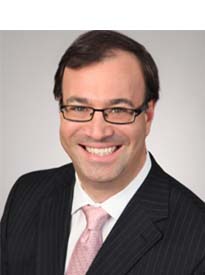Taxes play a significant role in our clients’ lives. In fact, for 2013, at least three provinces actually have a marginal tax rate of 50%, although the level of income at which such a tax rate is reached varies, ranging from $135,000 in Quebec to $150,000 in Nova Scotia and to $509,000 in Ontario.
As financial advisors, we should constantly be asking ourselves whether we are helping our clients understand how taxes can impact every financial decision that they make. This is especially true when it comes to investing.
In introducing the tax-free savings account (TFSA), the 2008 federal budget estimated that the TFSA, in combination with existing registered plans, will permit more than 90% of Canadians to hold all their financial assets in tax-efficient savings vehicles as the TFSA matures over the next 20 years.
These vehicles include the TFSA (to save for anything), the RRSP (to save for retirement), the registered education savings plan (to save for children’s post-secondary education) and the registered disability savings plan (to save for someone with a severe disability).
But how many of us take the easy way out and don’t encourage our clients to fully consider the tax advantages associated with these plans?
Take the RESP, for example. How many of us are simply advising our clients to contribute just the bare minimum of $2,500 to an RESP annually for each child to access the 20% matching Canada education savings grant (CESG) that’s worth $500? Perhaps we should be encouraging clients who can afford to do so to put in a larger, lump-sum amount up front to maximize the tax-deferred compounding inside the RESP?
After all, in almost all cases, when the funds are withdrawn from an RESP, no taxes will ever be paid. How? Well, the contributions come out tax-free. The income, growth and CESGs, while theoretically taxable to the student in the form of an educational assistance payment, will almost certainly also be tax-free owing to students’ ability to claim various tax credits available to them, including, most commonly, the basic personal amount and tuition, education and textbook amounts.
The same can be said about the RRSP or TFSA: Have we encouraged our clients to contribute the maximum annually? Have we fully explained to our clients when to use the RRSP and when to focus on the TFSA? Both plans facilitate long-term, tax-free investment compounding along with the ability to carry forward unused contribution room to a future year. For clients who don’t have the funds to maximize contributions to both plans, a careful examination of the their current marginal tax rate vs their expected future marginal effective tax rates for the year in which funds are expected to be withdrawn can be the deciding factor between choosing the TFSA or the RRSP in the current year.
When it comes to our clients’ non-registered portfolios, presumably we sit down with our clients at least annually to review the performance of their portfolios. But do we only focus on nominal returns in the portfolios? Or do we let clients know that the favourable tax treatment accorded to Canadian dividends, capital gains and return of capital can positively contribute to an increase in their real, after-tax returns?
Finally, if our clients make regular charitable donations, do we selflessly suggest that they consider donating appreciated marketable securities or mutual or segregated funds directly “in-kind” to the charities of their choice? Not only will the client get a donation receipt equal to the fair market value of the securities being donated but donating in-kind also wipes out any tax bill associated with the accrued gains on the securities being donated.
As advisors, our role is to always put clients first. Although advisors aren’t supposed to be tax experts — and should always refer clients to a tax professional — if we aren’t at least helping clients to understand the role taxes play in each component of their financial plans, are we really serving those clients properly?
